How to write your Standard of Living Improvement Proposal
We include this 20 page layout with every Proposal Pack. If you want this template to have a different visual design theme than the one illustrated here, purchase any Proposal Pack design and create this template using the purchased design theme. This template is included in every Proposal Pack. If you get a Proposal Pack or the Professional, you can also make any variation of this template with different chapters to suit your needs.
We typically include more chapters in the templates than most people will need to give everyone more variety in the chapters they may need. You can trim down a long template by removing pages you do not need or combining multiple chapter topics into one page.
 DOWNLOADABLE, ONE-TIME COST, NO SUBSCRIPTION FEES
DOWNLOADABLE, ONE-TIME COST, NO SUBSCRIPTION FEESYou can also create countless variations of this document to suit your needs using the included library of 2200+ chapters if ordering a Proposal Pack or Professional.
 What Our Clients Say
What Our Clients SayThis program is very easy to use and is written layman’s terms. There are no difficult legal terms to figure out. I like this program and recommend it to anyone who wants to create a quick document for business purposes."
E. P. Willard Business Systems Inc.
Related Article
Related Video
Related Templates
- Community Center Funding Proposal
- Medical Clinic for City Workforce Funding Proposal
- Non-profit Community Healthcare Program Proposal
- Womens Center Funding Proposal
- Health and Fitness Program Proposal
- Mental Health Support for Employees Proposal
- Vocational Job Training for Youth Proposal
- Community Garden Project Proposal
- Community Healthcare Support Proposal
- Daycare Preschool Grant Funding Proposal
- Domestic Violence Support Program Funding Proposal
- Political Action Proposal
- Healthcare Outsourced Services Provider Proposal
- Senior Home Care Proposal
- Orphanage Non-Profit Funding Support Proposal
- Grief Counseling Non-Profit Seeking Funding Proposal
- Medical Clinic Project Proposal
- HHS Federal Government Grant Proposal
- Halfway House Proposal
- Mens Center Funding Proposal
- Indigenous Community Funding Project Proposal
- Clean Water Supply Project Proposal
- Nutritional Improvement Pilot Program Proposal
- Teen Center Funding Proposal
- Substance Abuse Program Proposal
- Outreach Center Funding Proposal
- Medical Clinic for Community Funding Proposal
- Daycare Center Proposal
- Community Self-Reliance Initiative Proposal
- Alternative Healthcare Services Proposal
- Assisted Living Care Proposal
- Long-Term Healthcare Services Proposal
- Occupational Therapy Services Proposal
- Elderly Care Services Proposal
- Retraining Workers Skills Development Proposal
- Inmate Job Training Program Proposal
- Mobile Literacy Program Funding Proposal
- Group Home for People with Disabilities Proposal
- Fighting Discrimination Funding Proposal
What's the Best Way to Write Your Standard of Living Improvement Proposal?
Using the Proposal Kit template library and Wizard software program is a proven solution for writing a standard of living related proposal. Proposal Kit provides a comprehensive set of templates that allow you to create a proposal to improve community living standards. The kit includes a line-item quoting database system that helps you organize cost summaries, quotes, estimates, budgets, and other financial details, ensuring that every topic of your proposal is covered.
Do you need to write such a proposal to enhance community living conditions? If so, the Proposal Kit is designed specifically for you.
What Types of Projects Are Standard of Living Improvement Proposal Written For?
Standard of living proposals are written for a wide range of community-enhancing projects. These proposals help secure funding and support for initiatives aimed at elevating living conditions. Here are some examples of the types of projects that require such proposals:
- Building affordable housing units
- Establishing homeless shelters
- Developing community health centers
- Launching nutrition programs
- Enhancing public transportation
- Creating job training programs
- Implementing waste management systems
- Improving urban infrastructure
- Expanding educational opportunities
- Introducing renewable energy projects
- Promoting clean water access
- Supporting mental health services
- Increasing public safety measures
- Facilitating community gardens
- Advocating for social equity programs
- Organizing addiction recovery services
- Developing senior citizen support programs
- Initiating youth mentorship initiatives
- Constructing playgrounds and parks
- Providing disability access improvements
Chapters this template is built with
There is no one-size-fits-all premade template that works for every scenario. That's why Proposal Kit lets you create customized proposals tailored to specific situations. With thousands of chapters available, you can tailor your proposal to your specific needs. Below is a starting point of chapters that can be customized using Proposal Kit's extensive content library.
Cover Letter
A cover letter provides a brief introduction to your proposal, offering a summary of the project's purpose and its significance to the community. It sets the stage and invites the reader to look further. In a standard of living proposal, the cover letter may highlight the urgency of addressing community needs and the potential transformative impact of the project, capturing the reader's attention from the outset.
Executive Summary
This section provides an overview of the entire proposal, highlighting key points such as project objectives, benefits, and funding requirements. It's designed to capture the interest of decision-makers quickly. For a standard of living proposal, the executive summary will summarize the specific enhancements aimed at uplifting the community, such as improved housing, healthcare, or education systems.
Needs Assessment
The needs assessment outlines the current issues facing the community and justifies the necessity of the proposed project. It uses data and facts to highlight the urgency and importance of the initiative. In this context, the needs assessment will include statistical data on poverty levels, housing inadequacies, or health disparities to provide a rationale for the project's implementation.
Improvement
This chapter discusses the specific improvements the project aims to achieve, detailing the positive impact on the community's living standards. Here, you will elaborate on targeted interventions, such as constructing new facilities, implementing educational programs, or introducing public health initiatives, and how these will directly benefit residents.
Funding Plan
A funding plan illustrates how the project will be financed, outlining potential sources of funds and demonstrating financial viability. In a standard of living proposal, this section will explore partnerships with government bodies, NGOs, or private sector investors, showing a clear roadmap for securing and using funds responsibly.
Standard of Living
This section delves into how the proposal specifically aims to improve living standards, discussing the social and economic benefits of the project. Detailed descriptions of expected outcomes, such as reduced unemployment rates, enhanced educational opportunities, or improved healthcare access, illustrate the project's potential impact on elevating community well-being.
Shelter
For projects involving housing, this chapter describes the proposed shelter solutions, including design, location, and sustainability features. It might include plans for energy-efficient buildings or community-centered layouts that not only provide housing but also enhance residents' quality of life.
Health and Wellness
This chapter focuses on initiatives that will enhance the health and wellness of the community, such as clinics or wellness programs. It may outline partnerships with local health providers, plans for mobile health services, or mental health support initiatives to ensure comprehensive community health enhancements.
Community
Here, you explore how the project fosters community engagement and participation, highlighting collaborative efforts. This chapter could describe community workshops, local leadership programs, or volunteer opportunities that empower residents to take an active role in the project's success and sustainability.
Special Needs
This section addresses the project's accommodations for individuals with special needs, ensuring inclusivity and accessibility. Specific strategies like accessible building designs, tailored healthcare services, or specialized educational programs demonstrate a commitment to inclusivity and equality.
Social Services
The social services chapter outlines how your project complements or introduces important social services to benefit the community. Examples might include expanding childcare services, implementing job placement programs, or enhancing access to legal aid, all aimed at fostering a supportive environment.
Expenses
The expenses section provides a detailed breakdown of projected costs, ensuring transparency and accountability. It will include a comprehensive list of expenditures related to construction, staffing, materials, and operations, providing stakeholders with a clear understanding of the project's financial requirements.
Funding Request
In this chapter, you formally request the required funding, presenting compelling arguments for financial support. You will outline the alignment of the project's goals with potential funders' missions and demonstrate how their investment will lead to measurable improvements in community living standards.
Future Funding
Future funding discusses sustainability and the project's long-term financial strategy, ensuring ongoing viability. This section may describe plans for generating revenue, using additional grants, or forming long-term partnerships to ensure the project continues to thrive beyond the initial funding phase.
Budget
A comprehensive budget details all financial topics, from initial expenses to long-term costs, ensuring financial clarity. This includes itemized lists of all anticipated costs related to the project, providing a clear financial plan that reassures stakeholders of fiscal responsibility.
Recommendations
This chapter offers expert recommendations, reinforcing the proposal's validity and the project's potential success. Recommendations might include advice from industry experts, best practices for implementation, or additional resources that could enhance the project's impact.
Social Responsibility
Social responsibility highlights the project's ethical and social impacts, aligning with broader community values. This chapter could discuss how the project supports local economies, promotes environmental sustainability, or strengthens social cohesion, emphasizing its alignment with ethical and community-focused goals.
Use cases for this template
Securing Funds for Urban Green Spaces
The Challenge
Mike, the director at GreenUrban Initiatives, was passionate about transforming neglected urban areas into vibrant community parks. However, his ambition hit a roadblock due to a lack of funds. The city's budget constraints meant that competition for public funding was fierce, and private investors were wary of long-term returns on such projects. With a pressing deadline to submit proposals for a new grant opportunity, Mike felt the pressure mounting. He knew that without a convincing proposal, the dream of turning barren lots into lush, communal green spaces could remain unrealized.
The Solution
In his search for a solution, Mike stumbled upon Proposal Kit, which became a game-changer. The software offered a variety of templates specifically designed for urban development projects, including community parks. These templates provided a structured approach that allowed Mike to clearly convey the vision and impact of the proposed parks. The line-item quoting database was particularly useful in breaking down cost estimates and making the financial plan clear and compelling for potential funders.
The Implementation
Armed with Proposal Kit, Mike created a proposal that highlighted not only the environmental and aesthetic benefits of the parks but also their potential to enhance community well-being and economic activity. The software's intuitive interface enabled Mike to customize each section, ensuring that the proposal resonated with the unique values and goals of various stakeholders. By aligning the project with broader urban renewal initiatives, Mike presented a cohesive, persuasive argument for investment.
The Outcome
The proposal was a resounding success, garnering interest and financial commitments from both the public and private sectors. Impressed by the detailed planning and potential benefits of the project, funders readily pledged their support. This influx of resources allowed the community parks project to move from concept to reality, significantly improving the urban landscape and quality of life for local residents.
Racing Against Time to Address Housing Needs
The Challenge
At BuildBetter Homes, project manager Susana was entrusted with the task of writing a proposal for an affordable housing initiative. The challenge was compounded by an urgent deadline, leaving her with only one month to deliver a comprehensive proposal. The stakes were high; failure to meet the deadline would mean losing an important opportunity to address a growing housing crisis. Susana knew she needed a method that would allow her to work swiftly without sacrificing the quality or depth of the proposal.
The Solution
Susana turned to Proposal Kit, integrating its capabilities with AI writing tools to expedite the proposal creation process. The software's repository of templates for housing projects provided a solid foundation, while the AI tools enhanced efficiency by generating content based on existing data. By automating parts of the writing process, Susana could focus on refining the narrative and ensuring the proposal was compelling.
The Implementation
Using the AI tools, Susana extracted data from the company website to write vital sections such as the executive summary and needs assessment. This seamless blend of AI-driven insights and Proposal Kit's structured templates allowed her to develop a detailed proposal that was both time-efficient and high-quality. The approach enabled Susana to allocate her time, concentrating on tailoring the project specifics to align with the funders' interests and priorities.
The Outcome
The proposal was completed ahead of schedule, showcasing a comprehensive plan for affordable housing that met all requirements set by prospective funders. Susana's ability to deliver under pressure not only secured the necessary approvals but also positioned her as a resourceful leader within her company. The project received the go-ahead, promising a significant impact on the community's housing situation.
Creating a Collaborative Health Initiative
The Challenge
Alan, the director at CareFirst, was on a mission to enhance health services for the homeless population in his city. To achieve this, he needed to write a Request for Proposal (RFP) that would attract committed and capable partners. The challenge lay in articulating the RFP's objectives clearly and compellingly to ensure that it resonated with potential collaborators who shared the organization's vision for social impact.
The Solution
Alan used Proposal Kit's extensive library of templates to develop a detailed and inviting RFP. The software provided a framework that emphasized clarity and precision, which is important for conveying the project's goals and expectations to potential partners. With a focus on creating partnerships rather than merely seeking vendors, Alan was able to highlight the collaborative nature of the initiative.
The Implementation
The template-based approach allowed Alan to outline the RFP's objectives, criteria, and evaluation process with confidence. By clearly defining what CareFirst was looking for in partners and including specific evaluation metrics, Alan ensured that the proposals received would be well-aligned with the project's goals. The professional quality of the RFP, enhanced by the Proposal Kit, attracted significant attention from organizations eager to contribute to the cause.
The Outcome
The RFP received numerous responses from qualified organizations, each eager to participate in the health services project. The clarity and professionalism of the RFP facilitated a smooth selection process, allowing CareFirst to choose partners who matched their vision and capabilities. This collaboration is set to deliver substantial improvements to health services for the homeless, marking a significant step forward in CareFirst's mission.
Conclusions and Recommendations
Whether you are addressing community health, housing, or public safety, Proposal Kit equips you to deliver a professional and convincing proposal. This comprehensive tool not only streamlines the planning phase but also increases your chances of securing the necessary funding and support. For anyone looking to make a meaningful impact on living standards, Proposal Kit is the ideal choice.
Also Known As
This template may also be referred to in different ways or be used in more specialized situations, such as:
- Community Development Proposal
- Housing Improvement Plan
- Urban Enhancement Proposal
- Social Welfare Initiative
- Health Improvement Project
- Public Service Proposal
- Community Service Program
- Living Standards Project
- Economic Upliftment Proposal
- Social Equity Plan
Abstract
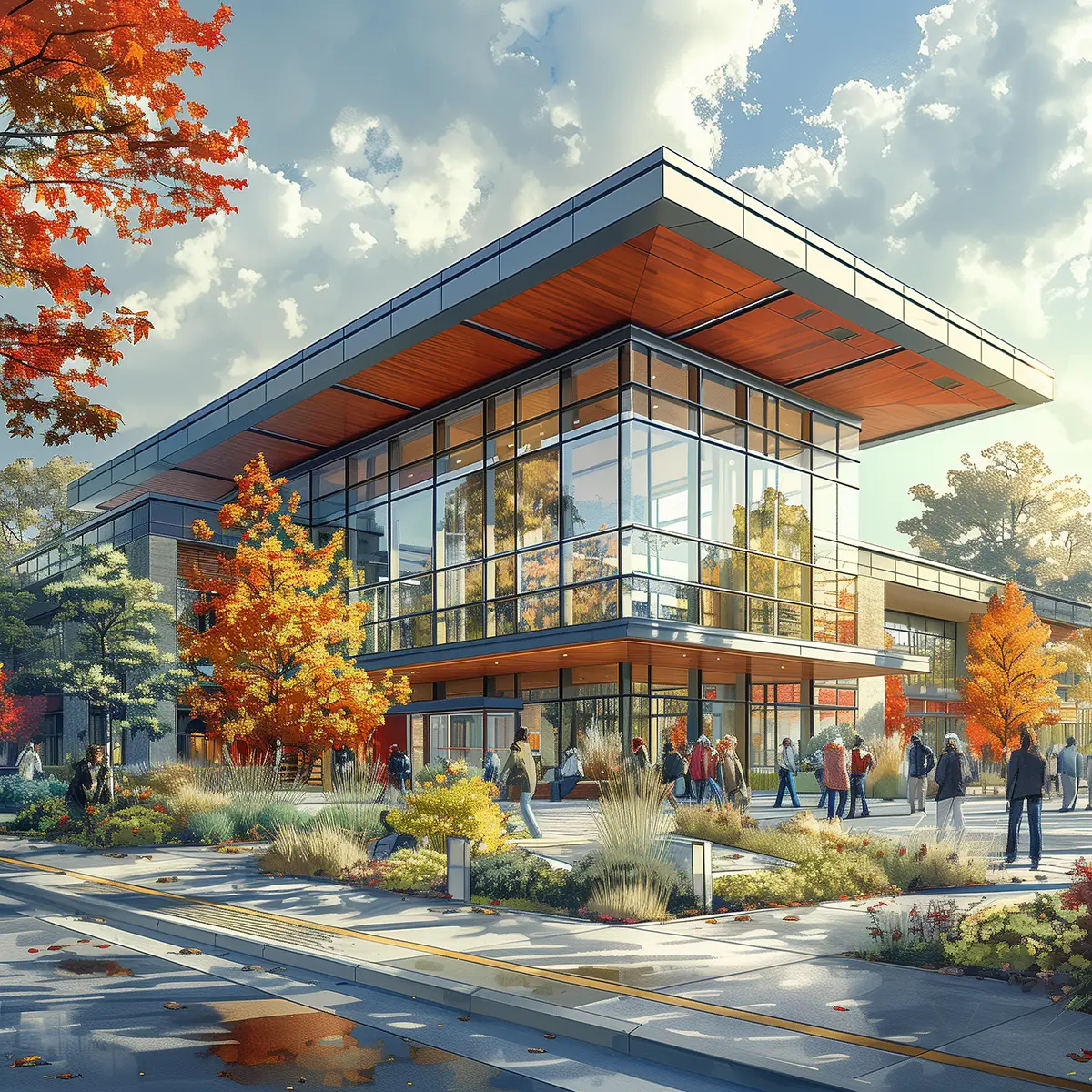 Efforts to raise the standard of living in developing countries and across multiple countries have become increasingly critical as economic growth, income levels, and broader societal well-being continue to diverge. Standard of living improvement proposals are fundamental tools enabling organizations, governments, and firms to address challenges such as extreme poverty, food security, housing supply shortages, and access to basic services in middle-income and lowest-income countries. These documents articulate comprehensive strategies for investing in better jobs, living wages, and social inclusion through targeted projects that reflect economic stability, social participation, and the realization of human rights at both the national level and global levels.
Efforts to raise the standard of living in developing countries and across multiple countries have become increasingly critical as economic growth, income levels, and broader societal well-being continue to diverge. Standard of living improvement proposals are fundamental tools enabling organizations, governments, and firms to address challenges such as extreme poverty, food security, housing supply shortages, and access to basic services in middle-income and lowest-income countries. These documents articulate comprehensive strategies for investing in better jobs, living wages, and social inclusion through targeted projects that reflect economic stability, social participation, and the realization of human rights at both the national level and global levels.
A successful proposal considers a wide range of dimensions, including housing costs, rising costs of basic goods, the adequacy of minimum living standards, and important community activities in rural areas and urban centers. It must assess national income distribution, regional differences in consumption per capita, and the impacts of inflation and trade restrictions on basic needs and social well-being. Proposals often require alignment with international law, regard for environmental impacts such as climate change, and familiarity with international poverty line indicators, as recognized by institutions like the World Bank.
To address these complex issues, proposals incorporate relevant knowledge about factors like education, internet access, sanitation, and the provision of healthcare and child care. They suggest mechanisms such as fiscal policy, subsidies, and innovation to boost productivity and household savings, while also recognizing the limitations imposed by debt, trade, and regulation. Proposals must put forward data-driven recommendations, identify the biggest drivers of inequality and convergence, and reflect critical topics of local culture, capacity, and self determination.
 Proposal Kit supports the assembly of these complex documents by providing an extensive content library, automated line-item quoting, and customizable templates that streamline the process of building a robust, persuasive plan in accordance with applicable guidelines and legislation. This enables users to clearly present spending plans, value chain impacts, and social responsibility initiatives that empower communities, families, and employees to reach their full potential. Future research and reforms are encouraged to further assess progress, adapt to new technologies, and account for the burden of higher costs as countries strive for a decent standard of living for millions at different levels of development.
Proposal Kit supports the assembly of these complex documents by providing an extensive content library, automated line-item quoting, and customizable templates that streamline the process of building a robust, persuasive plan in accordance with applicable guidelines and legislation. This enables users to clearly present spending plans, value chain impacts, and social responsibility initiatives that empower communities, families, and employees to reach their full potential. Future research and reforms are encouraged to further assess progress, adapt to new technologies, and account for the burden of higher costs as countries strive for a decent standard of living for millions at different levels of development.
At a broader societal level, standard of living improvement proposals directly influence the lives of workers, families, and children by promoting access to basic services, fostering human health, and encouraging economic empowerment. In most countries, especially middle-income countries and middle-income economies, challenges such as rising housing prices, access to electricity, and the availability of adequate land are persistent barriers that require innovative solutions. High income countries and high income economies, as referenced by the World Bank, often report higher levels of wealth, yet still face issues with equity, working conditions, and affordable housing that must be addressed through a broader set of policies and reforms.
In contrast, the consequences of inadequate living standards are more severe in the lowest-income countries, where poverty eradication remains a central agenda. Issues such as open defecation, insufficient access to clean water, and the lack of universal vaccines put millions at risk and contribute to a decline in human health and mobility. The pandemic highlighted the need for robust healthcare systems and quick adoption of technology to improve the reach of important services. The ability to obtain sufficient food, housing, and education is often determined by the balance between income growth, availability of natural resources, and the effectiveness of regulations and fiscal policy.
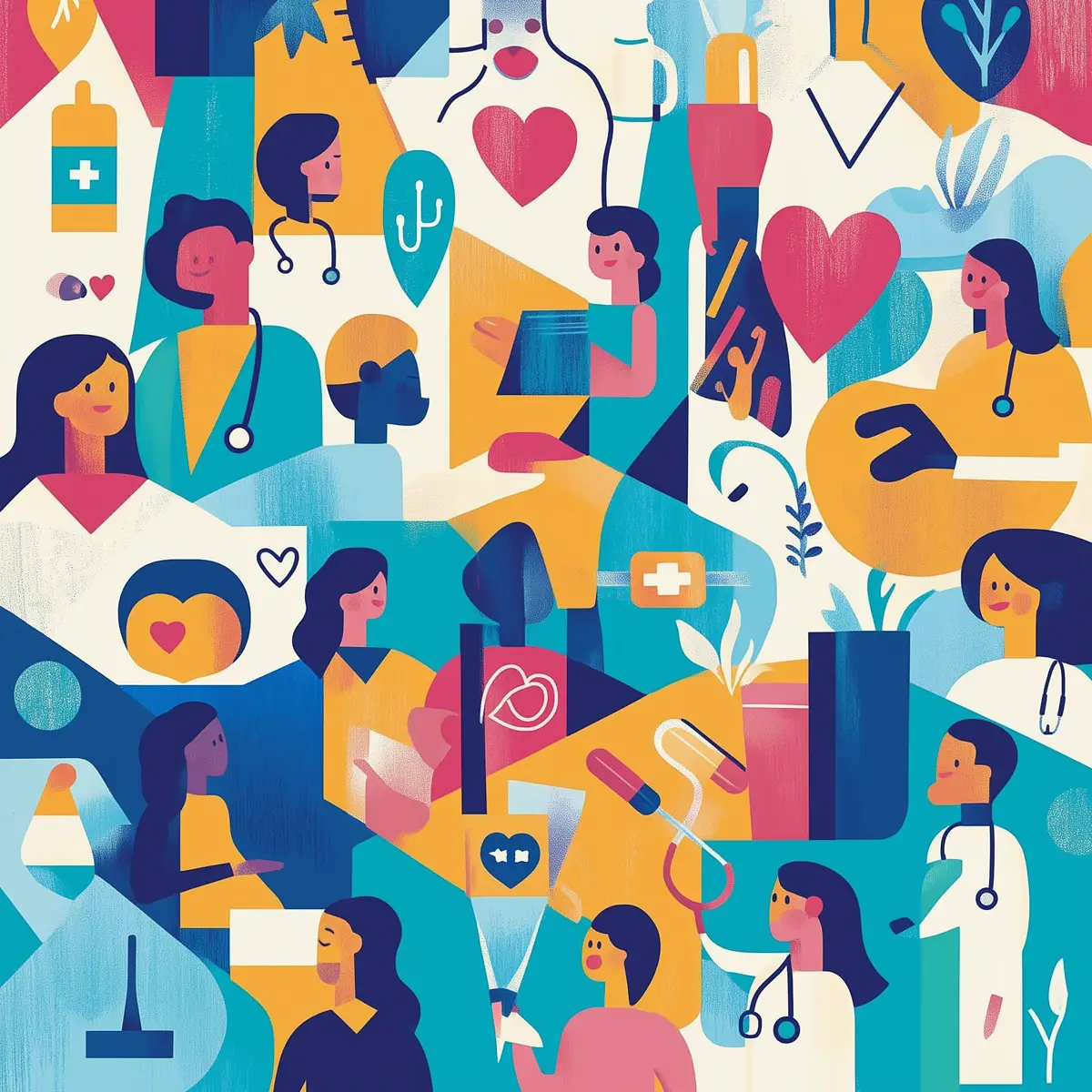 Proposal Kit enables people and organizations to respond to these complexities by providing access to structured templates that facilitate the assembly of proposals addressing a wide range of characteristics - from physical infrastructure and engineering to banking, credit, and civil society engagement. For instance, in India and South Korea, where rapid economic growth has led to both the rise of the middle class and new forms of inequality, targeted proposals have played a vital role in ensuring that income and property ownership are distributed more equitably and that future research and reforms are guided by data and principles that reflect the needs of local communities.
Proposal Kit enables people and organizations to respond to these complexities by providing access to structured templates that facilitate the assembly of proposals addressing a wide range of characteristics - from physical infrastructure and engineering to banking, credit, and civil society engagement. For instance, in India and South Korea, where rapid economic growth has led to both the rise of the middle class and new forms of inequality, targeted proposals have played a vital role in ensuring that income and property ownership are distributed more equitably and that future research and reforms are guided by data and principles that reflect the needs of local communities.
Such proposals consider the three dimensions of a decent living standard - income, access to basic goods and services, and the ability to participate in community and economic activities. By combining detailed reports, calculated needs assessments, and recommendations for reducing harm and exposure to risk, these documents help secure funding and support from both domestic and international markets. They play an important role in labor markets by advocating for fair pay, better working conditions, and higher skills development. Addressing the agenda of poverty reduction, decent wages, and social participation, proposals help build resilience in value chains and encourage political and economic inclusion at every level, from the household to the national economy.
Over the past decade, the demand for well-constructed proposals has increased as the complexity of social and economic issues has grown, notably due to the effects of globalization, climate change, and commodity market fluctuations. By putting advanced technology, automation, and comprehensive data analysis at the center of the document creation process, Proposal Kit supports the creation of proposals that represent a combination of best practices in economics, policy, and community engagement. This approach not only enables organizations to adapt to changing contexts and higher costs but also ensures that their proposals reflect the principles of equity, adequacy, and empowerment required for sustainable development and poverty eradication.
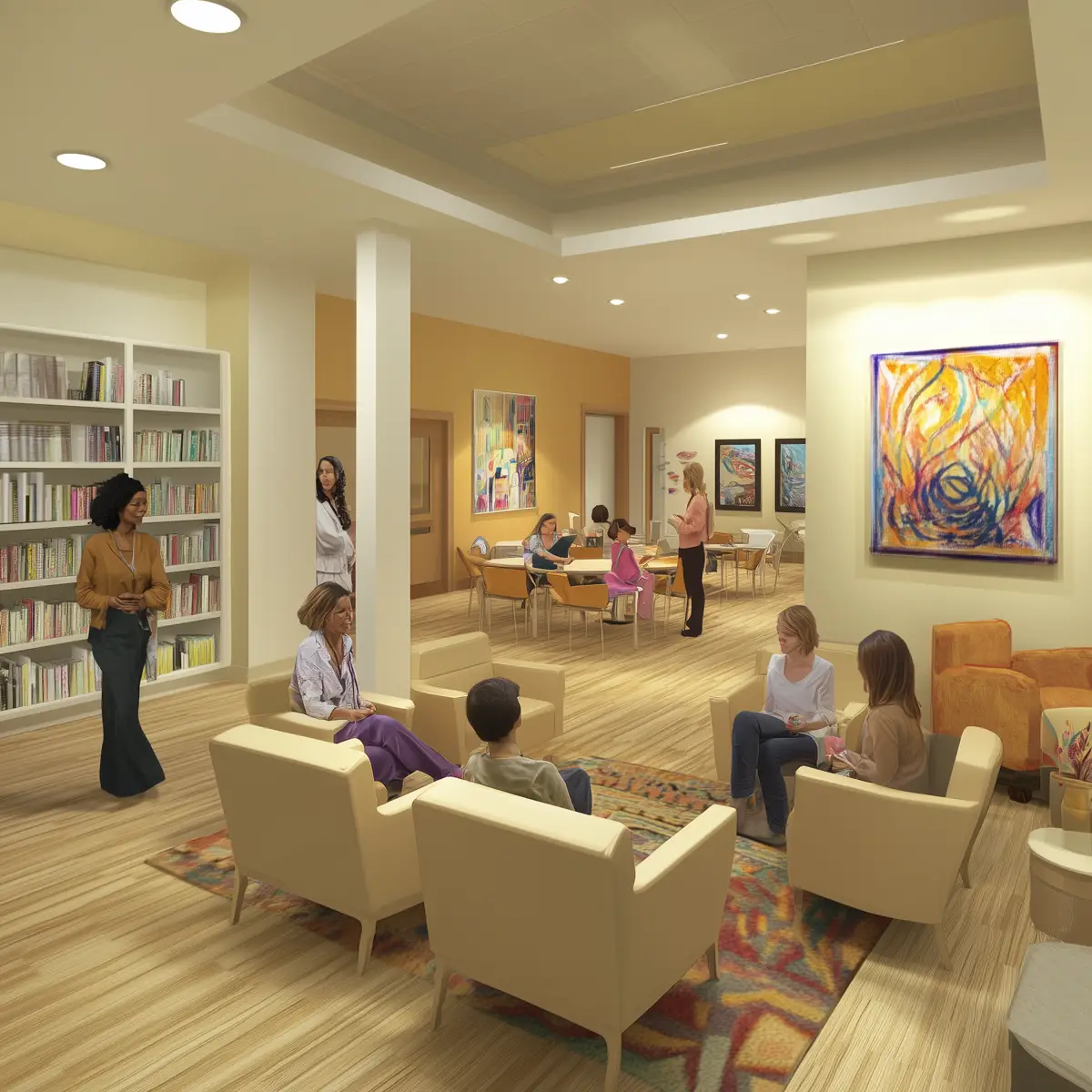 Addressing living standard disparities requires a nuanced understanding of how income, resources, and services are distributed and accessed in different economic contexts. High-income countries, as well as emerging economies, demonstrate that the achievement of an adequate standard of living is influenced by a complex interplay of factors, including GDP, education, and health infrastructure. The World Bank emphasizes that providing access to quality schools, important commodities, and sufficient money for basic needs has measurable effects on long-term economic and social outcomes. Data from multiple reports show that even as average income levels rise in some regions, other forms of inequality persist, such as disparities in adjusted wages or in the availability of property and land ownership.
Addressing living standard disparities requires a nuanced understanding of how income, resources, and services are distributed and accessed in different economic contexts. High-income countries, as well as emerging economies, demonstrate that the achievement of an adequate standard of living is influenced by a complex interplay of factors, including GDP, education, and health infrastructure. The World Bank emphasizes that providing access to quality schools, important commodities, and sufficient money for basic needs has measurable effects on long-term economic and social outcomes. Data from multiple reports show that even as average income levels rise in some regions, other forms of inequality persist, such as disparities in adjusted wages or in the availability of property and land ownership.
The extent to which a person or household can control or obtain important goods and services often varies significantly between two countries or even within regions of the same country. This implies that proposals must be tailored to local conditions, considering figures such as average per capita income, the falling or rising value of commodities, and the unique needs of different populations. For example, providing access to schools in rural India may require different strategies than those employed in high-income countries, where declining birth rates and changing demographics present other challenges.
These realities tend to reinforce the importance of creating proposals that are both flexible and data-driven. By analyzing not only the average but also the distribution and variation of resources, organizations can better align interventions with real needs. Control over economic resources, such as access to money, credit, and important services, must be balanced to ensure both immediate relief and sustainable growth. The article suggests that successful proposals should include mechanisms for ongoing monitoring and adjustment, recognizing that conditions may change and that falling short of an adequate standard can have lasting consequences.
 In summary, using tools and frameworks that incorporate the guidance of institutions like the World Bank and best practices from high income and middle income countries, organizations can develop proposals that more provide access to opportunities and resources. These efforts, when widely adopted, are important to closing gaps in living standards, supporting human dignity, and driving progress on a global scale.
In summary, using tools and frameworks that incorporate the guidance of institutions like the World Bank and best practices from high income and middle income countries, organizations can develop proposals that more provide access to opportunities and resources. These efforts, when widely adopted, are important to closing gaps in living standards, supporting human dignity, and driving progress on a global scale.
Frequently Asked Questions
What is a Standard of Living Improvement Proposal?
A standard of living proposal is a structured document that seeks to address and enhance the living conditions within a specific community or region. It typically presents a plan to secure funding, identifies the key areas of need, and outlines how proposed projects will positively impact residents' quality of life. This type of proposal can cover a range of initiatives, from affordable housing to public health improvements, and is important for attracting support and resources.
How Do I Start Writing a Standard of Living Improvement Proposal?
Beginning a standard of living proposal can feel overwhelming, but breaking it down into manageable sections helps. Start by researching and understanding the specific needs of the community you aim to serve. Gather data and testimonials to support your case. Next, outline the proposal's structure, including sections like the needs assessment, project objectives, and funding plan. Using tools like Proposal Kit can streamline this process by providing templates and organizational guidance, ensuring you address all necessary components.
What Are the Important Components of a Standard of Living Proposal?
An effective standard of living proposal typically includes several key components: a cover letter, an executive summary, a detailed needs assessment, a section outlining proposed improvements, a comprehensive funding plan, and a budget. Each component serves a distinct purpose, from introducing the proposal to providing financial transparency. Including these sections ensures that the proposal is well-rounded and persuasive, demonstrating the project's feasibility and potential impact.
How Can Proposal Kit Enhance My Standard of Living Proposal?
Proposal Kit can significantly enhance your standard of living proposal by offering an extensive library of customizable templates and tools. These resources guide you in structuring your document professionally, ensuring that you cover all important topics comprehensively. The software aids in creating a narrative that aligns with your project's goals, while the built-in quoting and budgeting tools help present a clear financial plan, increasing the likelihood of securing funding and support.
How Do I Make My Standard of Living Proposal Persuasive?
To make your standard of living proposal persuasive, focus on clearly defining the problem and your solution's impact. Use data and real-world examples to support your claims and articulate the benefits in a way that resonates with potential funders and stakeholders. Emphasize the long-term improvements your project will bring to the community. Incorporating testimonials from community members or experts can add authenticity and credibility. Tools like Proposal Kit also help refine your proposal's presentation, ensuring it is both professional and compelling.
20% Off Discount
![]() Add To Cart This Word Template
Add To Cart This Word Template
 Add To Cart Proposal Pack for Any Business
Add To Cart Proposal Pack for Any Business
 Add To Cart Proposal Kit Professional
Add To Cart Proposal Kit Professional
 4.7 stars, based on 849 reviews
4.7 stars, based on 849 reviewsProposal Kit chapters used in this template
Cover Letter, Title Page, Table of Contents, Executive Summary, Needs Assessment, Standard of Living, Community, Social Services, Shelter, Health and Wellness, Special Needs, Improvement, Social Responsibility, Funding Plan, Funding Request, Expenses, Budget, Future Funding, Recommendations, Back Page
Line Item Automated Chapters
If you purchase a Proposal Pack or the Professional Bundle, these proposal pages are generated using an automated line-item database in the included Wizard software.
Funding Request, Future Funding, Budget Three Year
You use this proposal for
- General business proposal
- Non-technical proposal
- Project pitch proposal
- Non-government grant, non-profit, NGO proposal
- Medical, healthcare, wellness proposal
- Spiritual, church, community proposal
How to create this template with Proposal Pack Wizard
You can create this document using any of the logo-designed Proposal Packs. Pick any Proposal Pack with a logo design theme you like best; they will all work equally well. The Proposal Pack for Any Business is the pack with no extra added logos or colors - designed to be used plain or for you to customize with your logos and graphics.
The Proposal Pack design theme you purchase will determine the visual look of this template. The screenshot above only shows the plain generic design theme.
We include a library of chapters to be assembled based on your needs. All proposals are different and have different needs and goals. We designed Proposal Pack so you can customize the documents to suit your needs.
You will best create this document using the Proposal Pack Wizard - Expert Edition software to select this template and build it in the Proposal Pack logo design theme of your choice along with any desired customizations (such as adding additional chapters, removing unneeded chapters, changing the order of chapters, and importing your company logo). This template outlines a proposal for the described situation. Each user is responsible for typing in the actual content of the provided pages with their information to complete the proposal. Suggestions in the abstract may include features in higher-end packages and are facilitated by the selection of chapter templates to support the narrative of each proposal, which help guide the user in filling in the details.
The Wizard software's AI Writer will write the content of the pages of the template based on details provided for your company, client, project, financial details and other writing instructions. This will provide a personalized version of the template completely written and ready to edit.
Once finished, the AI Writer's Word-to-PowerPoint converter can transform your proposal, business plan, or other business documents into a PowerPoint slideshow. Save time and effort by letting the AI analyze every chapter to condense its content into talking points, visually matching the document, and providing a consistent package of presentation material with the click of a button.
You create this template using the Wizard software with an entire Proposal Pack library and software. We include the Expert Edition of the software in the Proposal Kit Professional. Microsoft Word for Windows is required to use the customizing software. You can also edit Word document templates in other office software such as Word for Mac. We will assist Mac users in assembling complex templates for their first project if they do not have the required platform to run the Wizard software.
How to Build Templates Featured on Proposal Kit Website
Many people find the Proposal Kit website after searching for a specific proposal. Once you've purchased and installed the software, how do you build that template you found in the first place? This video shows you how to build any proposal you see on the Proposal Kit website.
 Ian Lauder has been helping businesses write their proposals and contracts for two decades. Ian is the owner and founder of Proposal Kit, one of the original sources of business proposal and contract software products started in 1997.
Ian Lauder has been helping businesses write their proposals and contracts for two decades. Ian is the owner and founder of Proposal Kit, one of the original sources of business proposal and contract software products started in 1997.By Ian Lauder
 Published by Proposal Kit, Inc.
Published by Proposal Kit, Inc.


 Cart
Cart
 Get 20% off ordering today:
Get 20% off ordering today: 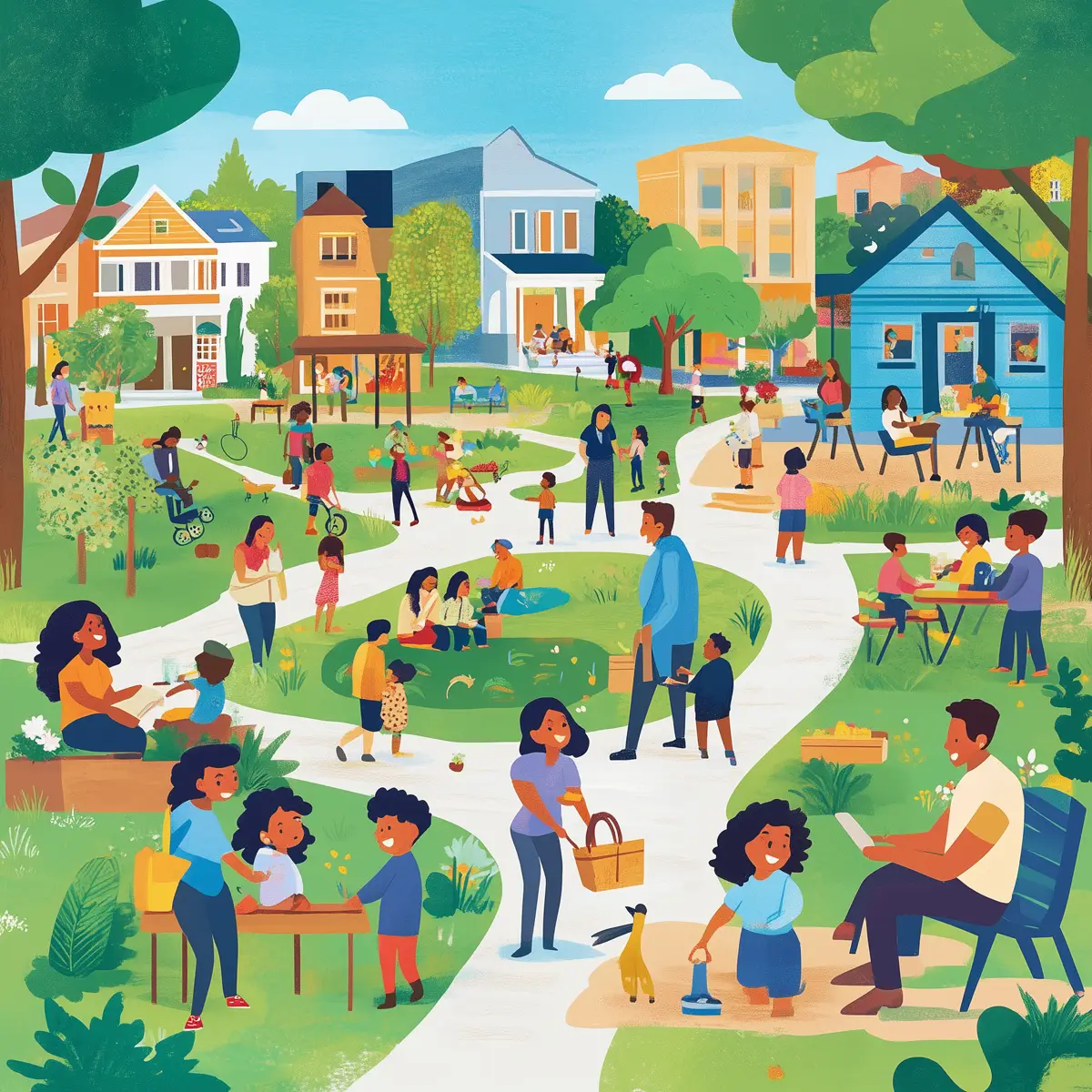
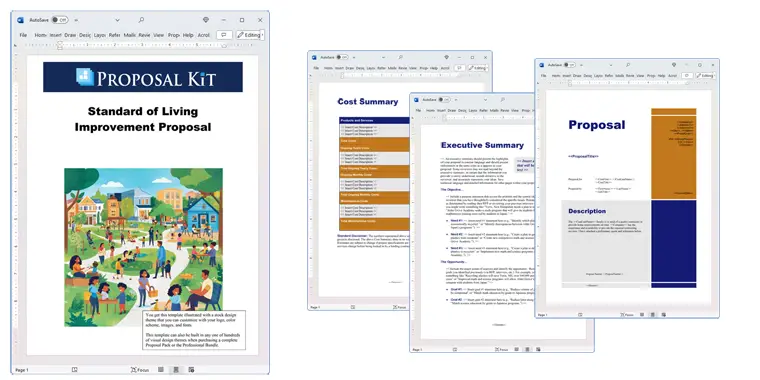

 Facebook
Facebook YouTube
YouTube Bluesky
Bluesky Search Site
Search Site